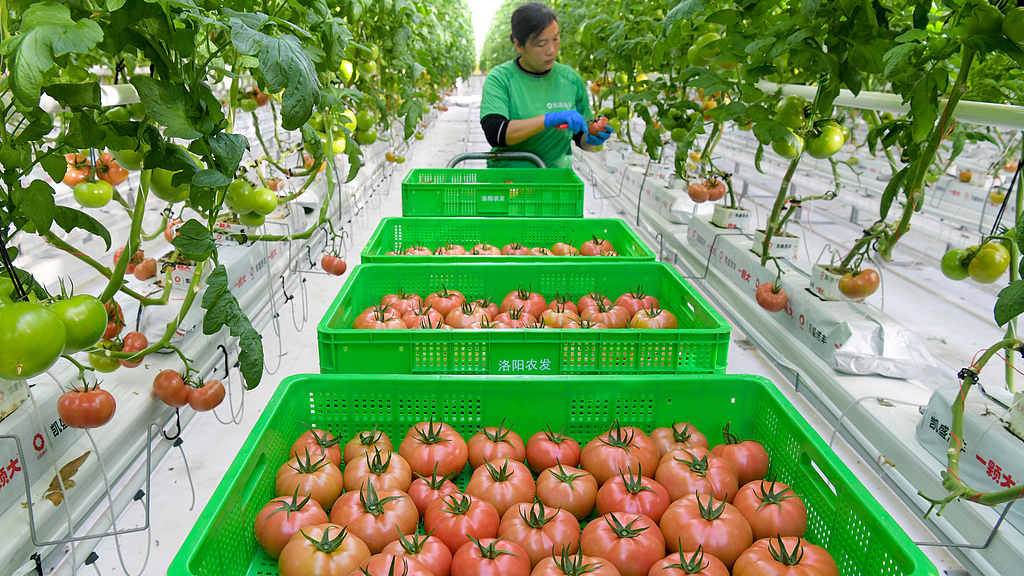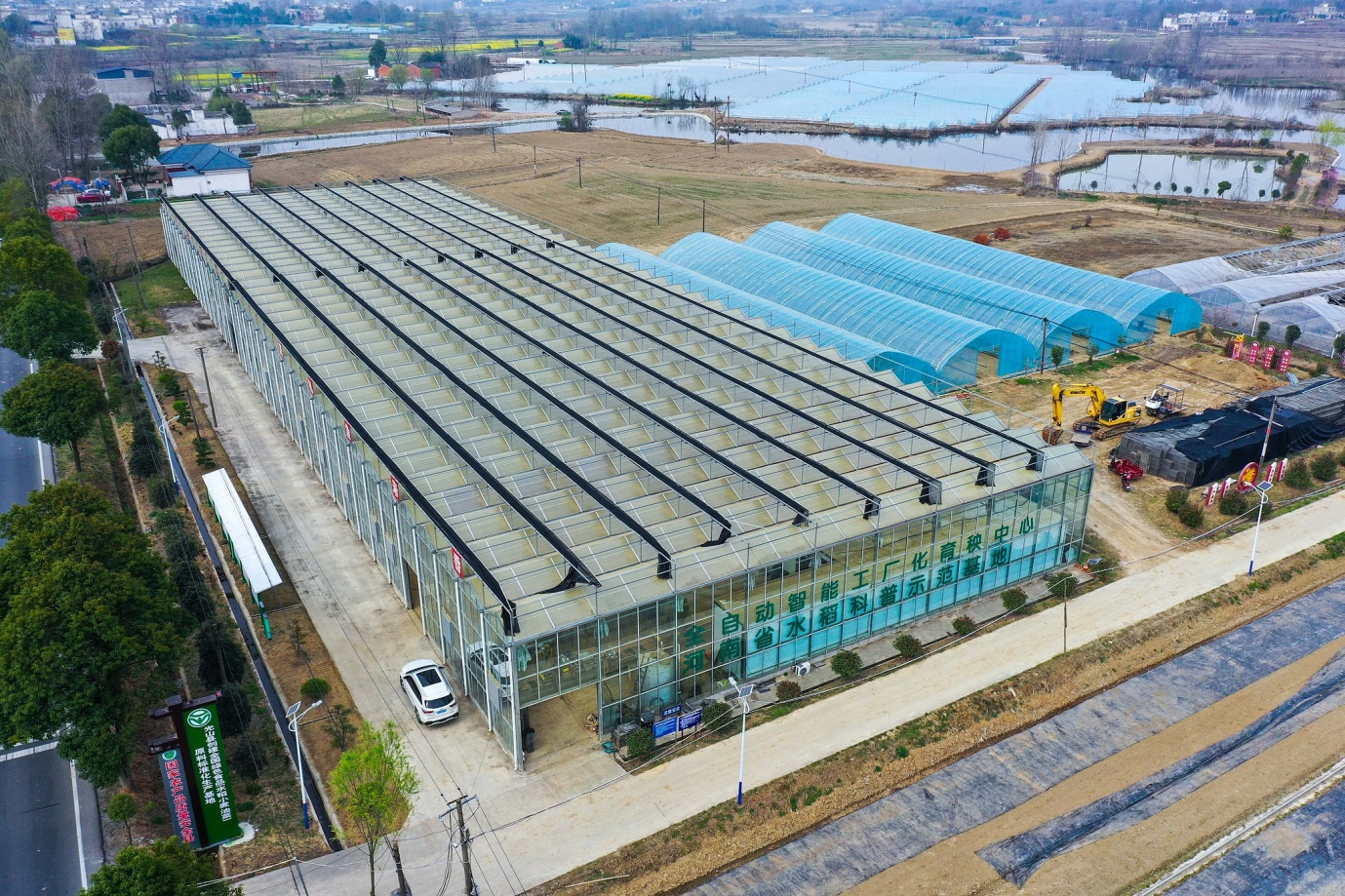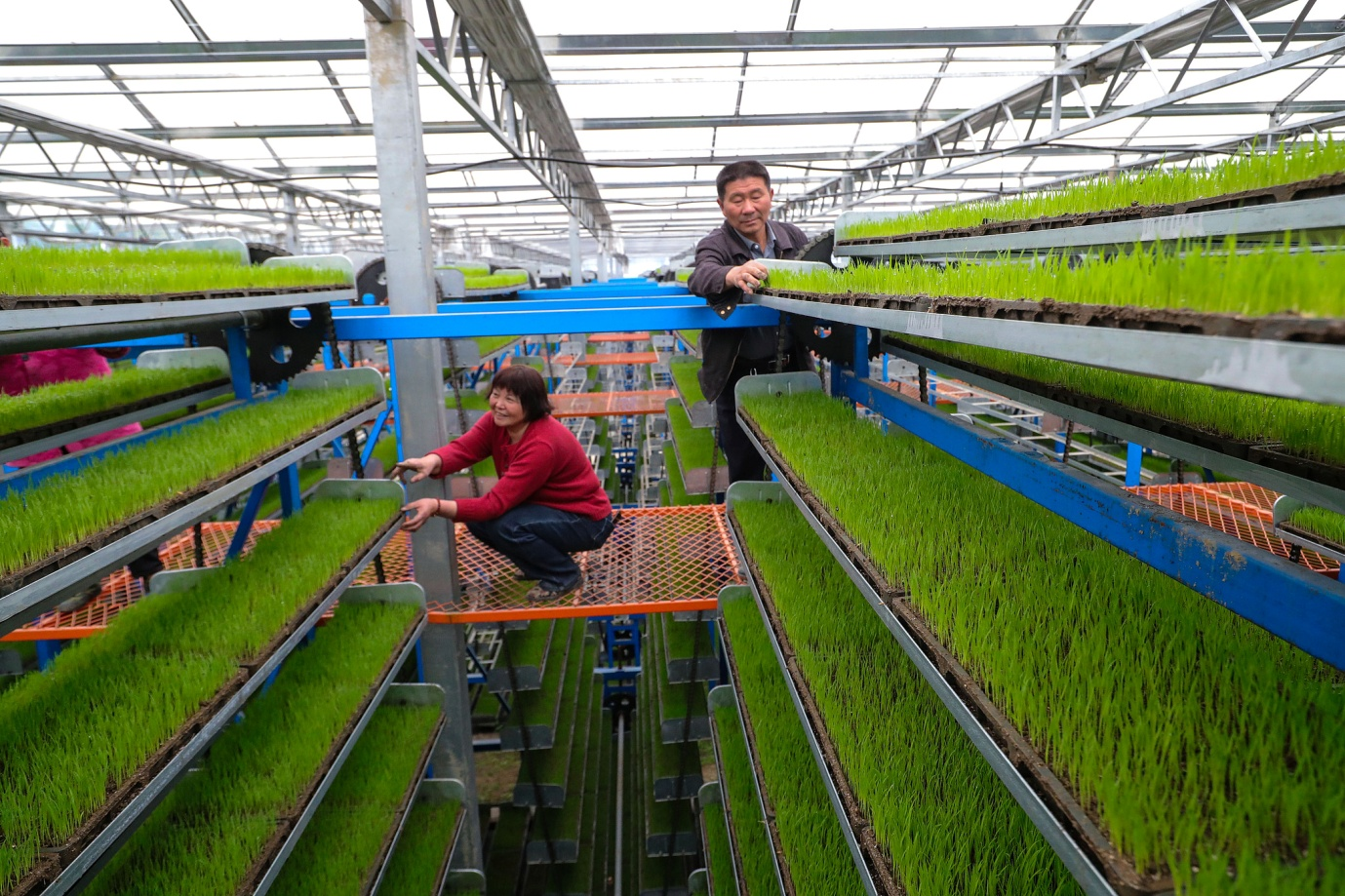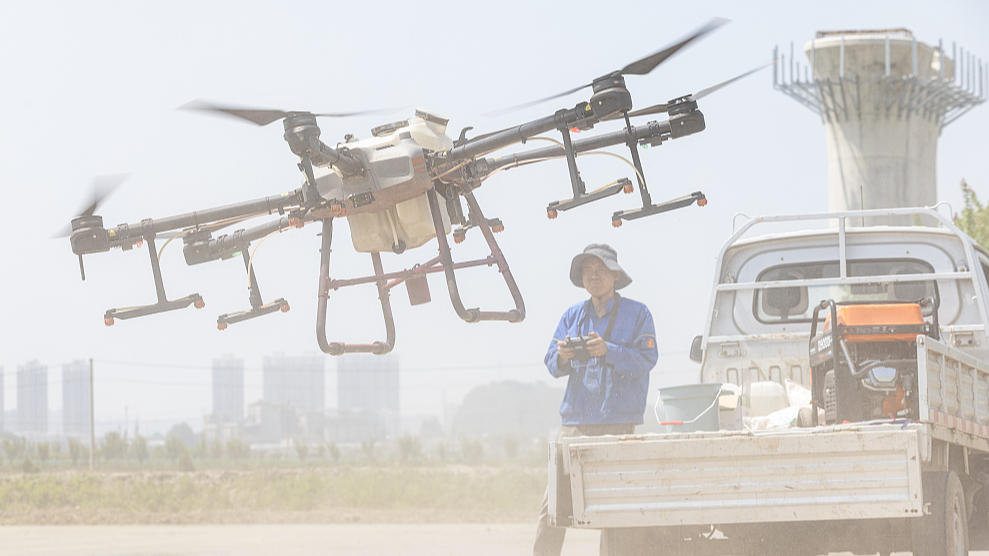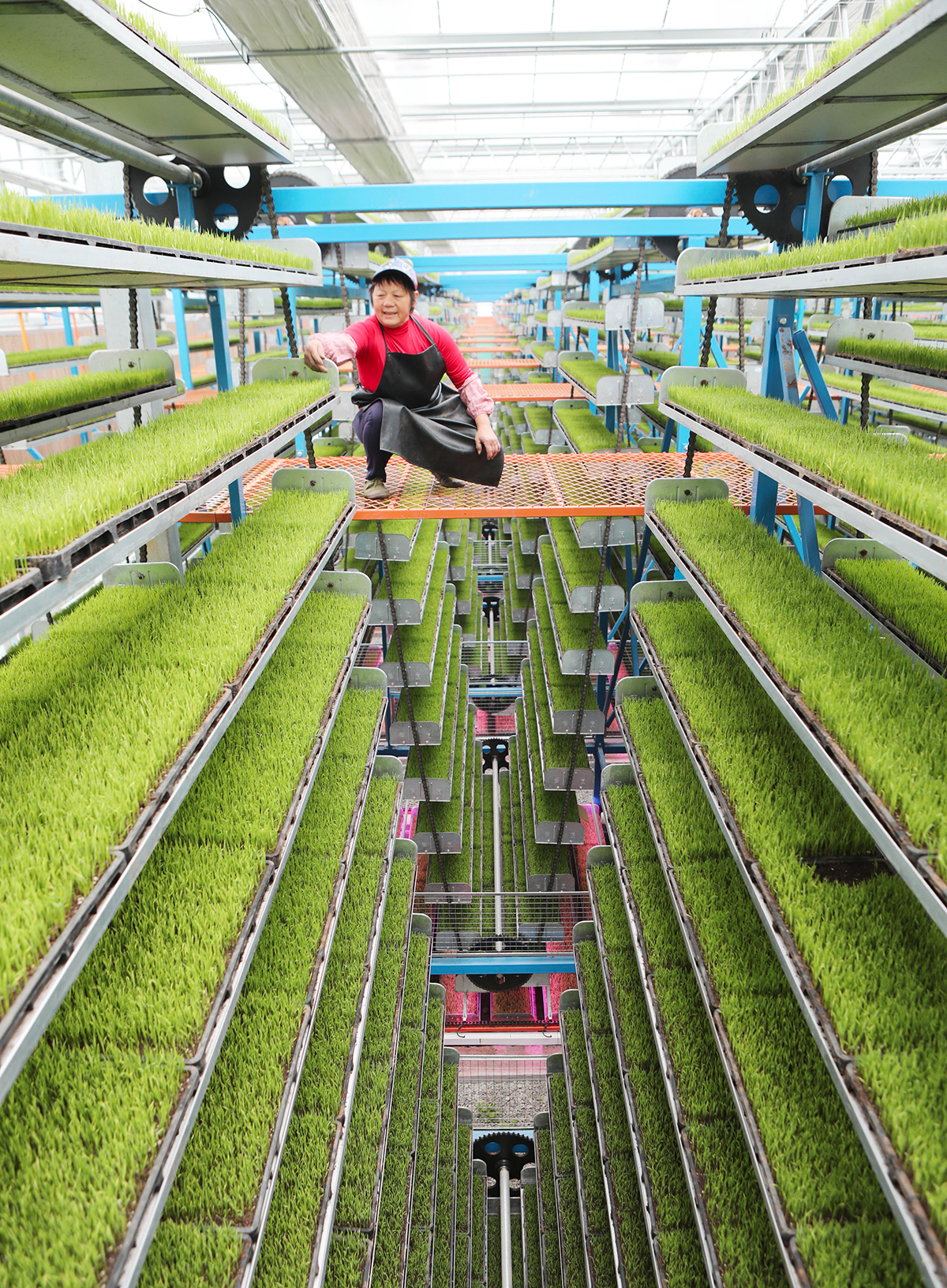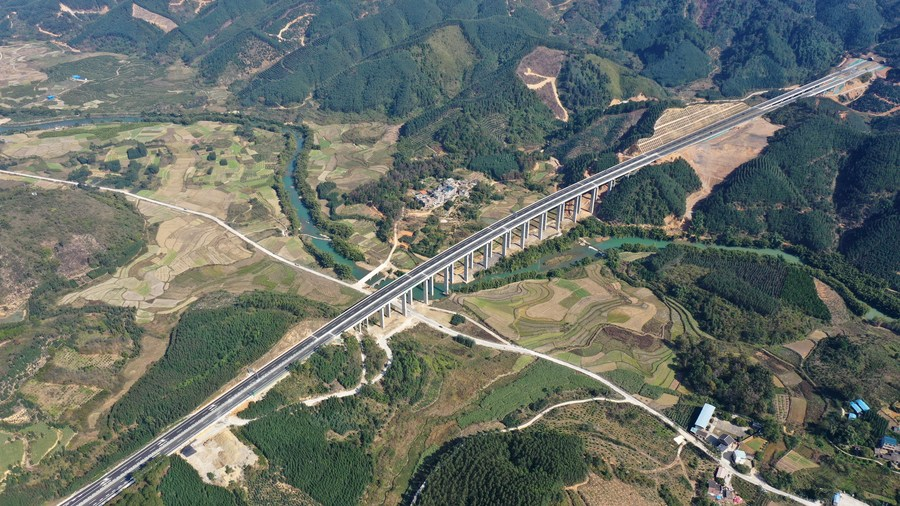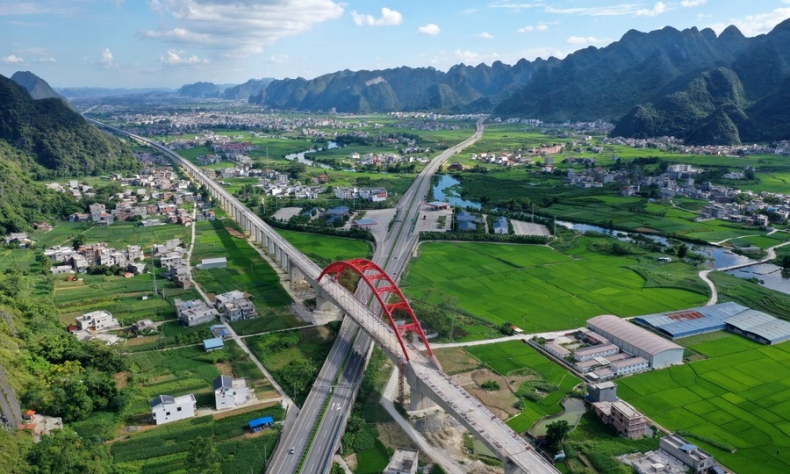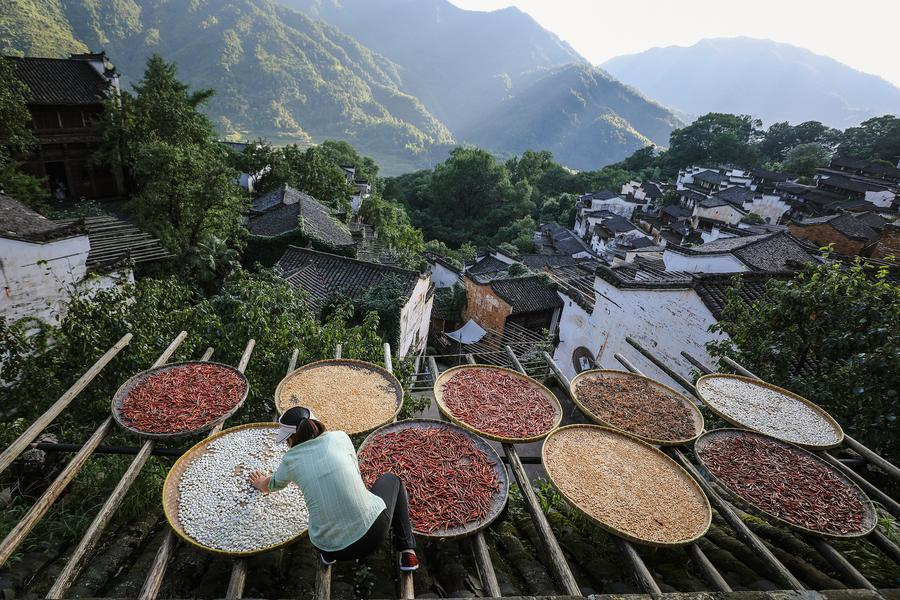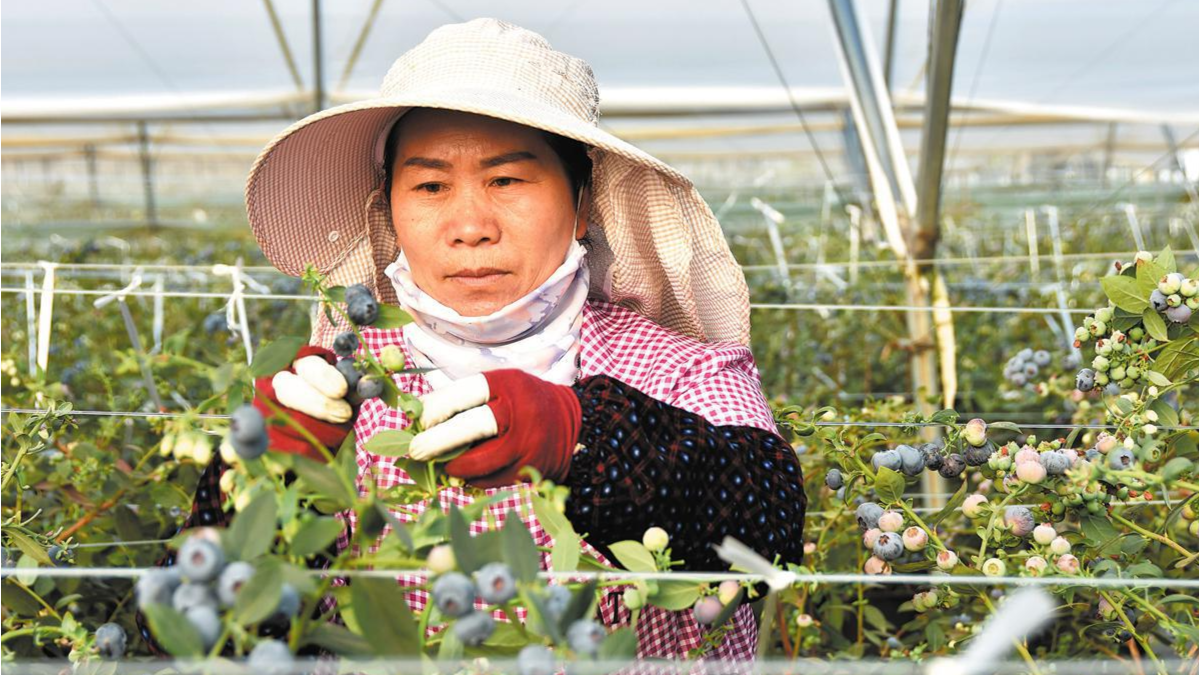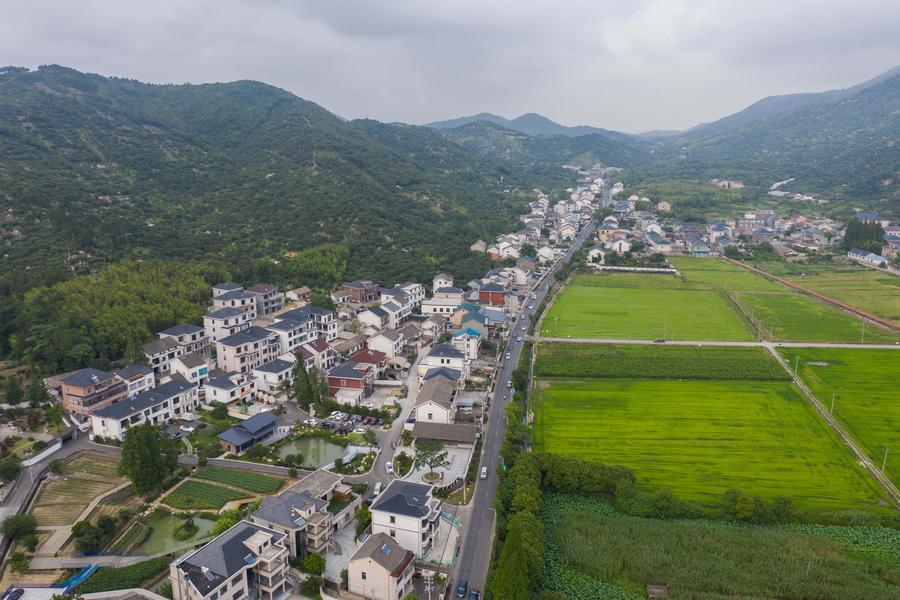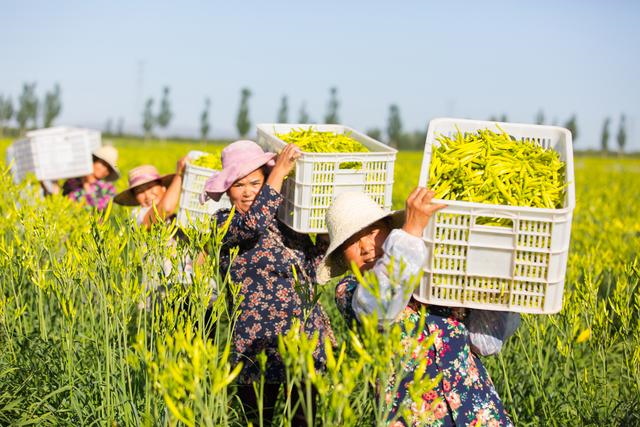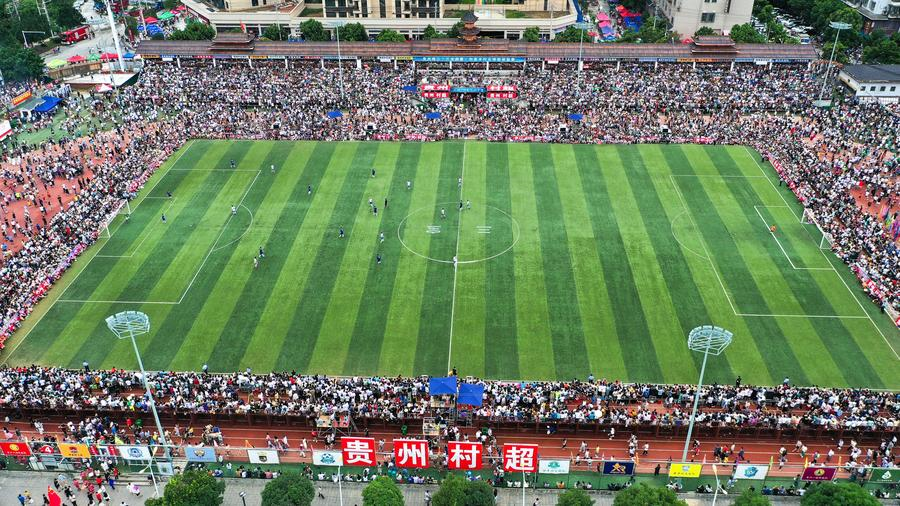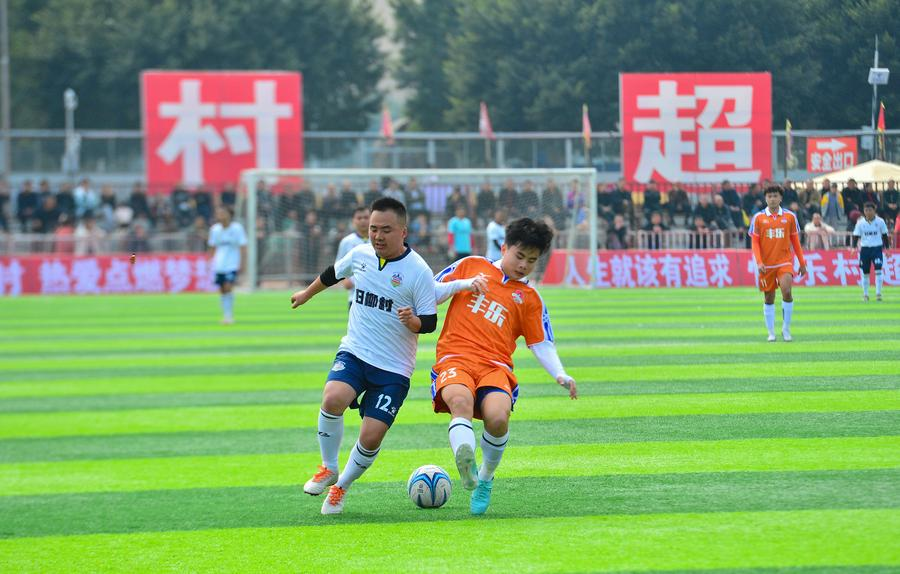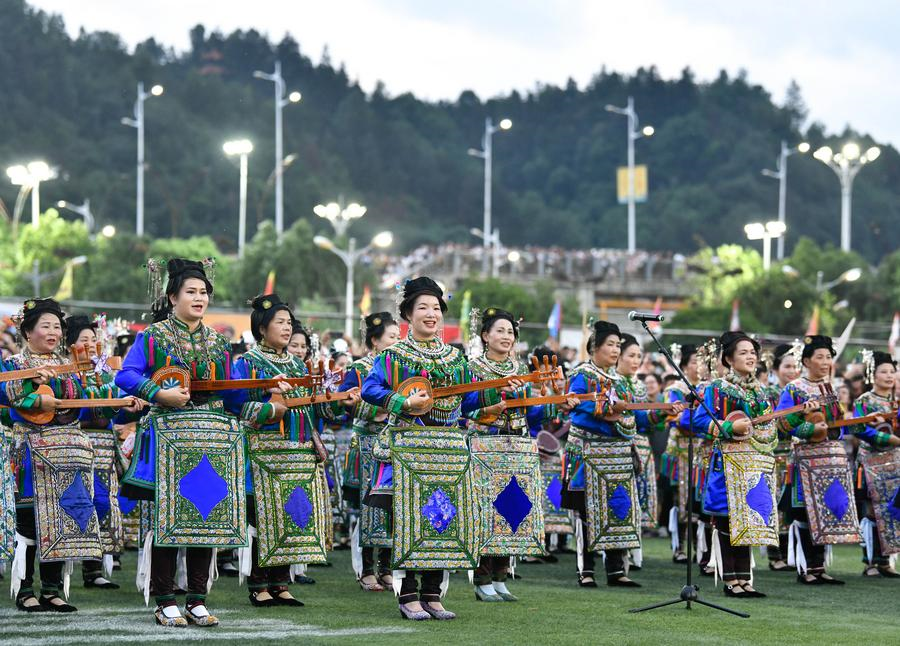China Rural Revitalization
China Agriculture Sector and Rural Revitalization
Since Chairman Mao Zedong on 1 October 1949 solemnly proclaimed on the Tian'anmen Gate Tower the founding of the Central People’s Government of the People’s Republic of China, over the past seven and half decades, the Communist Party of China (CPC) has embarked on an arduous journey of national development and modernization. Under the leadership of the CPC, China has transformed from a poor developing country to the world’s second-largest economy. As the Chinese proverb goes "Only when everyone contributes wood will the fire burn brightly." Since the founding of the People’s Republic of China, the CPC, adhering to a people-centered perspective on development has united China’s 56 ethnic groups and led the Chinese people in working assiduously to transform the fortunes of the country. However, for China, once denigrated as the ‘‘sick man of East Asia’’ by Western imperialist powers to realize this remarkable feat particularly in a relatively short period of time has been anything but a walk in the park.
As widely known, at its founding, the People’s Republic of China inherited a weak economic foundation, with a complete lack of heavy machinery manufacturing or modern technology and equipment. As Chairman Mao Zedong pointed out, “What can we make at present? We can make tables and chairs, teacups and teapots, we can grow grain and grind it into flour, and we can make paper. But we can’t make a single motor car, plane, tank, or tractor.” To help build a prosperous country and improve the livelihood of the Chinese people, Mao Zedong in December 1953 proposed that China should develop ‘‘modernized industry,’’ ‘‘modernized agriculture and transportation,’’ and ‘‘modernized national defense’’ – this was when the proposition of the ‘‘four modenizations’’ started to take shape. The following year, at the First Session of the Third National People’s Congress which took place from the end of 1964 to the beginning of 1965, Chinese Premier Zhou Enlai officially announced to the nation the strategic goal of achieving modernization of agriculture, industry, national defense, and science and technology. Thanks to dedicated efforts of the Chinese people guided by the strong leadership of the CPC, over the past six decades, China has witnessed remarkable progress in the four areas: agriculture, industry, national defense, and science and technology.
For example, seven decades ago China was home to an underfed population of 400 million –During this period, one of the frequently asked questions was ‘‘who will feed China?’’ However, since the CPC embarked on the new journey of agricultural development and carrying out various reforms in the sector, China, though host to less than 10 percent of world arable land, at present feeds one-fifth of the world’s entire population. According to the Food and Agriculture Organization of the United Nation, China ranks first in the world in terms of the production of cereals, cotton, fruits, vegetables, poultry, meat, eggs and fishery products. Certainly, this is a commendable effort in the pursuit of food and nutrition security, not only in China but also for the rest of the world – especially as China increasingly strengthens agricultural cooperation with other countries. For example, under the Belt and Road Initiative (BRI), proposed by China in 2013, the Asian country has so far signed agricultural and fishery cooperation agreement with more than 80 countries, and initiated over 650 agricultural investment projects – making significant contribution to agricultural development worldwide.
China’s Smart Agriculture
‘‘China's policymakers and relevant stakeholders remain committed to tapping into additional resources to optimize sustainable agricultural productivity that in recent years, have been supported by the use of newfangled digital technologies – pushing for smart agriculture, while incorporating advanced information and communications technology (ICT) infrastructure into agriculture – leveraging the internet of things (IoT), artificial intelligence (AI), robots and drones to strengthen rural development.
Presently, farmers in Chailixi village in Tengzhou city of East China's Shandong Province, the country's largest producer of vegetables and grains, known in the past to rely on simple tools such as hoes for farming have switched to smart agriculture – with only a smartphone, local farmers can monitor air temperature and carbon dioxide levels in greenhouses in real-time, and remotely contact experts for guidance on the best agricultural practices to adopt for the planting season, which can upgrade agricultural production efficiency and revitalizing the nation's rural development.
Compared to a few years ago, Chinese farmers are relying much more on drones for monitoring, spraying and risk mitigation on their farmlands. The availability of these digital technologies has better positioned farmers to benefit more from smart agriculture. The Chinese government's investment in domestic ICT infrastructure development has yielded terrific results, coming alongside with tremendous government support for smart agriculture advances.
As of December 2021, the total number of internet users in China had reached 1.03 billion, up by 42.96 million from December 2020, representing an internet penetration rate of 73 percent – which indicates a rising internet penetration rate in both rural and urban areas. With the country's current massive internet penetration rate, which is highly likely to grow further in the years ahead, the entire agricultural value chain is becoming more tightly connected from production to marketing – a digital transformation that is reducing agricultural production costs, upgrading efficiency and creating new job opportunities for local communities in the rural areas.
Farmers can now access ready markets for agricultural products via e-commerce platforms, an avenue that was not available to them just a few years ago. According to recent data released by JD.com, China's largest online retailer, show that since the start of Spring on February 4, 2022, the online transaction volume of the company's agricultural products, plants, and other green consumption has increased by over 40 percent year-on-year (YoY) and the turnover of fertilizers and gardening has also increased by 317 percent and 247 percent (YoY), respectively.
In rural areas, online consumption of agricultural products has also soared – prior to the spring equinox in 2022 the transaction value of domestic agricultural technology services had grown by over 10 times (YoY), in county-level rural areas, agricultural technology services had increased by 20 percent, and the share of transaction volume rose from 62 percent to 82 percent.
An incredible growth pattern that elucidates why the National Plan for Agricultural and Rural Informatization for the 14th Five-Year Plan (2021-2026) issued by the Ministry of Agriculture and Rural Affairs on March 9, 2022 proposes smart agriculture as the main direction for high-quality development of agricultural and rural informatization. And while the plan proposes by 2025 for smart agriculture to achieve an ambitious new milestone – the informatization rate of agricultural production will reach 27 percent and annual online retail sales of agricultural products will exceed 800 billion yuan ($125.8 billion). But there's still a lot of work to be done in order to achieve this goal.’’ – Excerpt from the Ghana Centre for China Studies (GCCS) publication titled ‘‘China's smart agriculture: technologies for high-quality growth,’’ published in a joint collaboration with the China Global Television Network (CGTN).
CHINA’S RURAL ROAD NETWORK
How Improving Rural Roads Create Real Impact for Chinese
Villages
‘‘The State Council Information Office in 2024 issued a white paper on China’s rural road development. Titled ‘‘China’s Rural Roads in the New Era,’’ the white paper outlines the nation’s achievements and vision for rural development in the new era – and shares China’s experience. According to the white paper, over the last decade, upgraded and newly-built rural roads added up to more than 2.5 million km. By the end of 2023 the total length of rural roads reached 4.6 million km, a 21.7 percent expansion compared to 2013, enough to circle the equator 115 times. Further details show a total of 700,000 km of county roads, 1.24 million km of township roads and 2.66 million km of village roads were built. There were a total of 530,000 highway bridges and 2,222 tunnels in rural areas. Ultimately, the upgraded and newly-constructed rural roads help build a rural transport infrastructure network, where county roads connect rural and urban areas, township roads crisscross, and village roads facilitate travel between households and farmland.
Considered the primary, if not the sole transport channel in China’s rural communities, rural roads play a critical role in the nation’s development. As the Chinese saying goes: ‘‘if you want to be wealthy, build roads first’’. Guided by this understanding, the Chinese government, committed to meeting the people’s growing desire for a better life has spared no effort in financing the development of rural roads. Over the past decade, a cumulative investment of RMB4.3trillion and RMB1.1 trillion has been invested in rural roads fixed assets and maintenance, respectively. Benefiting from diverse market-based financing mechanisms in rural road development, the government contributed approximately 80 percent of the total funding in either category – expediting the development of good-quality rural roads. Since the 18th National Congress of the CPC in 2012 China’s rural roads development has transitioned into a new phase. Under the leadership of President Xi Jinping, China has witnessed high-quality development of rural roads mainly underpinned by institutional innovation, pertinent policies, systematic planning and targeted policy implementation. Over the period, the upgraded and newly-built rural roads have help provide strong support for the comprehensive development of the rural economy and society – playing an indispensable role in laying the foundation for advancing all-round rural revitalization and rural modernization.’’ – Excerpt from the Ghana Centre for China Studies (GCCS) publication titled ‘‘Rural Roads Investment Serve China’s Development,’’ published in a joint collaboration with China Internet Information Center.
China’s Rural Revitalization Diary
China’s Village Supper League and Rural Revitalization
China’s Village Football League: Catalyst for Rural
Revitalization
‘‘Organized and played by locals, the Village Super League is an amateur football tournament created for rural residents engaged in various occupations to showcase their football skills and passion for the sport. Divided into two stages, preliminaries of the 2024 Village Super League kicked off on January 6 and ended on February 24 with 62 participating teams, up from 20 last year. Ever since the 2023 edition of the Village Super League went viral last summer, gaining more than 20 billion views online by the end of June, just a little over a month since the grassroots tournament commenced, the competition has continued to gain traction, both in China and abroad.
Over the past year, rising popularity of the Village Super League, known for its down-to-earth nature, spectacular goal-scoring performances and festive atmosphere has significantly impacted the social and economic landscape of Rongjiang, an obscure county in Guizhou province that is presently world-famous for hosting the football games. For example, in the tourism industry, a key driver of socio-economic progress in the County, the football tournament has had a profound impact. Data released by the Village Super League Office of Rongjiang County show that ever since the grassroots football tournament went viral, Rongjiang has attracted more than 7.33 million tourists and generated in total tourism revenue of more than 8.1 billion yuan (about $1.1 billion).
Also, for agriculture, strongly linked to food security and job creation in Rongjiang, the Village Super League is opening up new opportunities for growth in the County and surrounding villages. According to local authorities, during the tournament last year, online and offline sales of agricultural special products in Rongjiang County exceeded 400 million yuan ($55 million), up almost 60 percent. Benefitting from the colossal rise in revenue, surrounding villages and participant of various industries in the County including farmers, entrepreneurs, innovators and owners of small and medium-sized enterprises (SMEs) are inspired to adopt new strategies to earn more income during the football games – leveraging the football tournament to drive sales of agricultural products, and develop the tourism and services sector. Data provided by the local government reveal that as of June 27 last year when the football tournament was ongoing a total of 654 new business enterprises were established in the County including 195 in agriculture and food processing, 188 in retail and 91 in the catering industry.’’ – Excerpt from the Ghana Centre for China Studies (GCCS) publication titled ‘‘China’s Village Football League: Catalyst for Rural Vitalization.’’
OUR PUBLICATIONS
- China’s smart agriculture: technologies for high-quality growth.
- High-quality transport infrastructure strengthens China’s rural economies.
- Financial inclusion in China: An indispensable tool for poverty alleviation.
- China’s role in poverty alleviation.
- China’s Village Football League: Catalyst for Rural Revitalization.
- Internet Access and Rural Development: What Can Ghana learn from China?
- Mitigating global food waste: Does China provide lessons?
- Rural Roads Investment Serve China’s Development.
